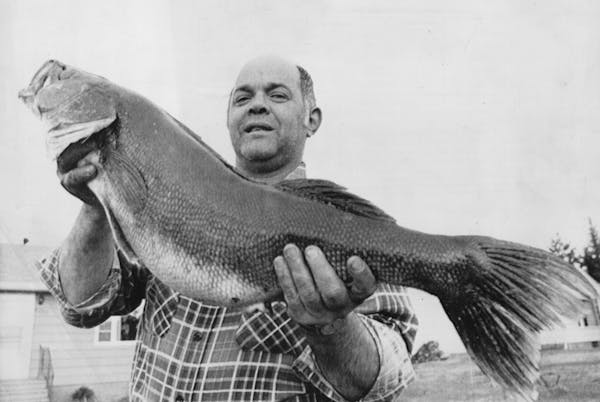About this time last year, Alan Bergo, the forager and onetime chef of Minneapolis' late, lamented Lucia's, was driving near his home in Menomonie, Wis., when a yearling buck bounded in front of his car. Bergo hit the brakes — and the deer, which bounced off his bumper.
Fall is prime roadkill season. Among the more than 1 million vehicle collisions with large animals on U.S. roads each year, the great majority involve deer — though Minnesota drivers have hit everything from bears to mountain lions. State Farm calculates local drivers' risk of having an animal-involved insurance claim at 1 in 70, 11th highest among the states.
Roadkill often ends up eaten by scavengers or disposed of by maintenance crews. But for people like Bergo, the silver lining of animals killed by cars is their no-cost, free-range meat. Heaven's manna, for the modern era.
When Bergo got out of his vehicle, he saw the deer he'd hit was still alive, but couldn't walk. After surmising its pelvis was shattered, Bergo dispatched the buck. (He travels with all manner of knives and shears for foraging, including a scimitar for harvesting gooseberries. "My car looks like a serial-killer mobile," he admits.)
Bergo called the local DNR conservation officer, then took the animal home and butchered it. "I probably got a good 70 pounds of meat," he said. "It was the perfect revenge for totaling the first car I'd ever bought myself."
City slickers' only experience with roadkill might be from playing the videogame Frogger. But on rural roads, vehicle-wildlife collisions are prevalent enough to have spawned Roadkill Bingo cards and comedic routines about law offices representing animal victims. ("We get bucks for our bucks, and dough for our does.")
Bergo does a lot of what he calls "meat gleaning" around southwest Wisconsin, where roadkill sightings are frequently posted on the region's version of Nextdoor. "People talk about it like it's a normal thing," he explained.
Before he joined the wild-food community, Bergo would have found it not-at-all normal to eat truck-struck pheasant, as he now often does. "I already knew how to break down whole animals, but I would never have considered eating roadkill because there's such a stigma."
But as long as an animal had died recently, wasn't sick (chronic wasting disease can be a concern), and bruising or ruptured internal organs hadn't spoiled the prime cuts, Bergo realized its meat wasn't so different than what he'd plated on $30 entrees. And certainly fresher than what you'd buy in the supermarket.
"Things are so overly sanitized now," Bergo said. "In the scheme of things, humans have eaten much more dangerous things than roadkill."
Salvaging meat
Some states have banned roadkill possession due to concerns of drivers purposefully weaponizing their cars. But roughly half of the United States, including ours, allow the public to take roadkill. In Minnesota, a wildlife-possession permit, acquired through the DNR or other law-enforcement agency, is required. (Removing the animal would otherwise be considered an offense similar to having illegally hunted it.)
It's hard to say exactly how much roadkill is salvaged in Minnesota and, of that meat, how much is consumed by humans. DNR conservation officers issued nearly 1,600 wildlife-possession permits last year, but other state, county, and municipal law-enforcement groups don't aggregate their totals. And the tags don't differentiate between roadkill and, say, an animal found dead in a field or a pond. Nor how the possessor intends to use it. Game hunters use roadkill as bait; wildlife sanctuaries feed it to their animals; and trophy enthusiasts may only keep an animal's antlers, horn or pelt.
The DNR doesn't have a formal process for salvaging meat, said spokesman Joe Albert, though interested parties can let their local conservation officer, sheriff, or police department know that they're happy to pick up a carcass. "We don't want any animals to go to waste," Albert said. "Local conservation officers have an understanding of who wants it, who could use it and would be in contact with those people."
The 'dead deer list'
Mark and Sofia Johnson have gleaned about a deer a year by being on the Minnetonka police department's "dead deer list." To remain eligible, the Johnsons noted, you must arrive at the scene within 30 minutes and you can only decline a deer once.
When they got their first call from police, about 25 years ago, they had limited experience with butchery. But being DIY-types (they built their own house), they decided to process the deer themselves, guided by a schlocky public-library video. "We wanted it to be economical," Sofia said. "And we figured we'd get better at it."
Since then, the couple has developed such a reputation for handling roadkill that relatives have brought them ducks and turkey they've hit. "The deer is tender, but the turkey, even after 24 hours in the crock pot with pineapple juice, was still really tough," Sofia noted.
She uses the venison in meatloaf, moussaka, curry and chili, and recommends tempering the meat's lean gaminess by cooking it with fat and fruit. Not everyone partakes. Their youngest son, who was about 11 when they got their first deer, was appalled, Sofia said. "He vowed never to eat it."
The Johnsons say that, when it comes to Minnetonka's deer population, their neighbors split mostly into two camps: those who hate the animals for eating their hostas and rosebushes, and those who put out corn to feed them. Few among them are fellow members of the third faction, suburban roadkill consumers.
"I think they're used to us being a little weird," Sofia said of their neighbors. "People cut a little slack for the ancient hippies," Mark added.
Music Review: St. Vincent's art-rock burns bright on seventh album, 'All Born Screaming'
Cristian Măcelaru to become music director of Cincinnati Symphony Orchestra in 2025-26
Italy bans loans of works to the Minneapolis Institute of Art in a dispute over an ancient statue





